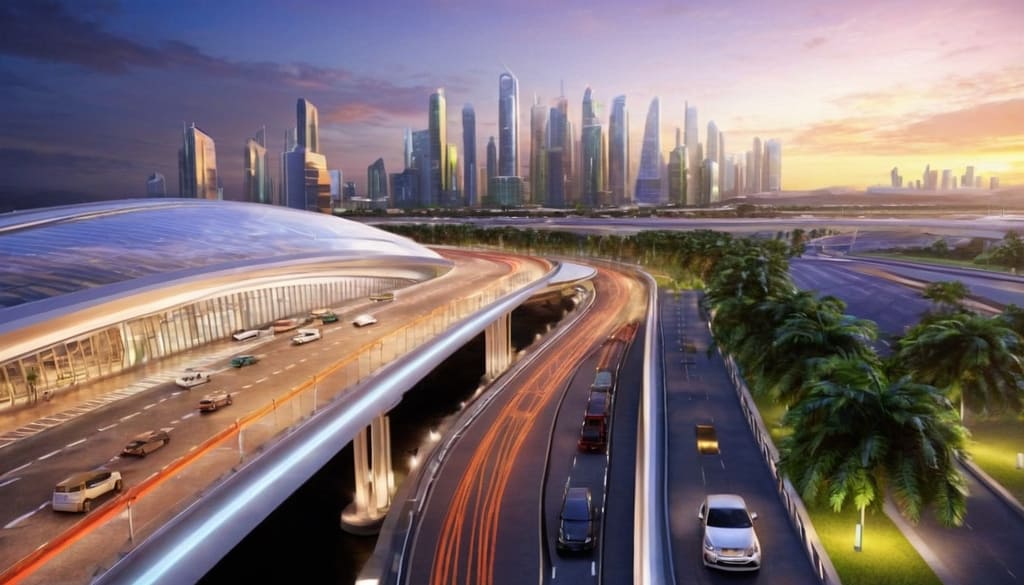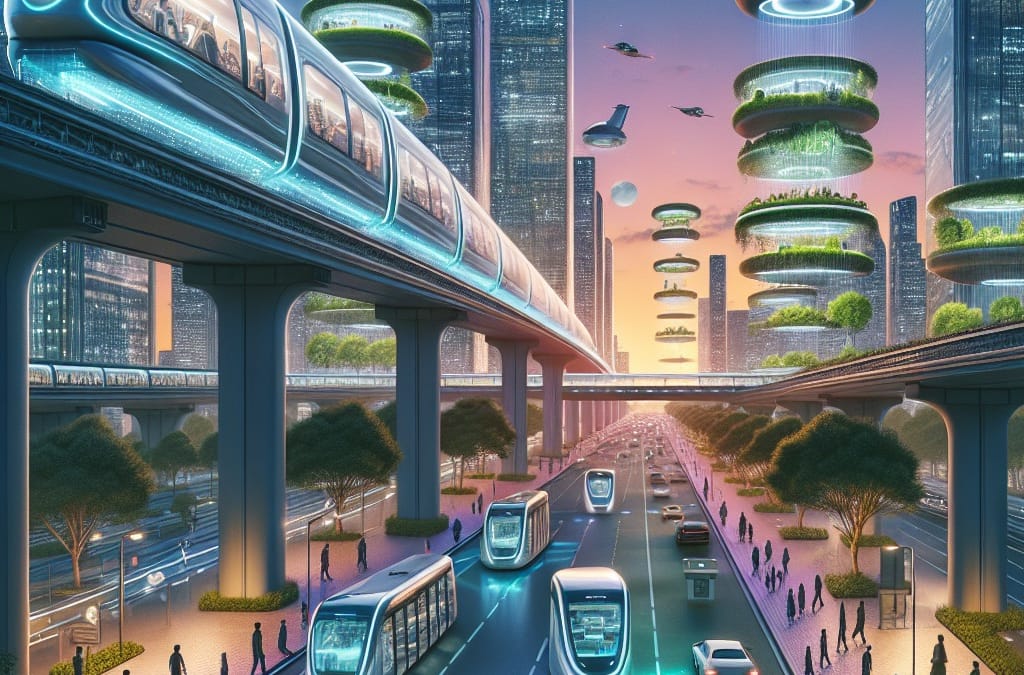In today’s rapidly evolving world, where the advancement of technology and the growth of urbanization meet at every turn, the idea of smart cities stands out as a shining example of hope for achieving sustainable living. At the heart of this progressive vision lies the pivotal role of transforming public transportation systems through intelligent design and groundbreaking innovation.
This comprehensive blog post embarks on an insightful journey into how smart cities are actively engaged in shaping the future of public transportation. By leveraging cutting-edge technologies and forward-thinking strategies, these urban landscapes are setting new standards to ensure that public transportation is not only efficient and sustainable, but also universally accessible to everyone.
Join us as we delve deeper into this fascinating exploration and discover how smart cities around the world are redefining mobility with their visionary approach to designing the future of public transportation – a critical step toward creating more livable, greener urban environments for generations to come.
The Genesis of Intelligent Transportation: Shaping the Future of Public Mobility
Embarking on the path to smart transportation requires a deep understanding of its critical importance in today’s world. As urban landscapes continue to grow at unprecedented rates, they bring with them a host of challenges – escalating traffic congestion, worsening air pollution, and increasing strain on already overburdened infrastructure. The answer to these burgeoning problems lies not within the confines of traditional transportation methods, but in a paradigm shift toward smarter, more digitally integrated systems that promise efficiency and innovation.
However, the essence of intelligent transportation goes beyond the mere adoption of new technological advances; it involves a complete rethinking of mobility paradigms. This transformative approach aims to significantly improve the quality of urban life while reducing our environmental footprint. It is an all-encompassing vision that includes the deployment of electric buses and autonomous vehicles, as well as sophisticated traffic management systems capable of dynamically adapting to changing urban conditions in real time.
By embracing this innovative spirit and integrating cutting-edge technologies into the public transport framework, we are actively shaping the future of public transport. This forward-thinking strategy not only addresses today’s urban mobility challenges, but also lays a sustainable foundation for generations to come. Through smart transportation initiatives, cities around the world are setting new standards for efficient travel that prioritizes both environmental stewardship and improved accessibility for every member of the community.

Foundational Elements of Intelligent Public Transportation: Shaping the Future of Urban Mobility
The blueprint for smart public transportation rests on several fundamental pillars, each of which plays a critical role in shaping the future of urban mobility in a more sustainable and inclusive direction.
Sustainability: The Core of Modern Transit Systems
Central to the ethos of smart public transport systems is an unwavering commitment to sustainability. This principle is brought to life through the use of electric and hybrid vehicles, which stand as a testament to our collective efforts to significantly reduce greenhouse gas emissions – in stark contrast to their fossil-fueled predecessors. Beyond the transition to cleaner energy sources, smart transit also involves the careful optimization of routes and schedules. The use of advanced data analytics allows for the intelligent allocation of resources, ensuring that vehicles are deployed with precision efficiency – minimizing unnecessary energy consumption and making a profound contribution to environmental conservation efforts.
Accessibility: Shaping the Future of Public Transportation for Inclusive Urban Mobility
Alongside sustainability, accessibility is emerging as another cornerstone in shaping the future of public transport. The vision here goes beyond mere physical access; it encompasses the creation of a universally welcoming environment within public transportation systems for every individual, regardless of age, physical ability, or economic status. Innovations such as low-floor buses exemplify this commitment by simplifying boarding processes, while digital advancements such as mobile applications with real-time updates enhance the user experience across all demographics. Together, these features work to break down barriers to urban mobility, making it truly user-friendly and accessible to all members of the community.
Together, these pillars not only underscore the transformative potential of smart public transportation, but also demonstrate how strategic innovation and thoughtful design can lead us to a more sustainable and inclusive future for urban mobility. By steadfastly adhering to these principles, we are paving the way for the creation of an efficient, green, and equitable transportation landscape that adeptly meets the dynamic needs of modern cities.
Efficiency: The Driving Force Behind Intelligent Transportation Systems
Efficiency is a key component in the development of intelligent transportation systems and a key factor in shaping the future of public transportation. Efficiency is manifested not only in significantly reduced travel times, but also in improved reliability of transit services. Cutting-edge technologies, such as GPS tracking, play a critical role in this transformation. They provide commuters with real-time information on bus and train arrival times, minimizing wait times and streamlining trip planning. This leap toward more efficient urban mobility solutions underscores a broader commitment to optimizing public transportation systems for the benefit of all users.

Pioneering Innovations Leading the Way
Autonomous Vehicles: Revolutionizing Public Transportation
Among the myriad innovations poised to redefine our transportation landscape, autonomous vehicles stand out for their potential to revolutionize public transit systems. The concept of self-driving cars has long captured the imagination and sparked debate across platforms. However, their integration into public transportation networks heralds a new era of safer and more reliable services that operate independently of human drivers. Utilizing sophisticated navigation and control technologies, autonomous vehicles promise to deliver unprecedented levels of efficiency and safety-factors that are critical to shaping the future trajectory of public transportation.
These advances signal a transformative shift toward smarter, more responsive urban mobility solutions designed to meet today’s needs while anticipating future challenges. As we continue to explore and embrace these innovations, we move closer to realizing a vision where public transportation systems are not only highly efficient, but also universally accessible and environmentally sustainable – cornerstones upon which the smarter cities of tomorrow will be built.
Electric Mobility: A Catalyst for Cleaner Urban Environments
The advent of electric mobility, including both buses and trains, marks a decisive step towards reducing urban pollution and improving the quality of life in urban landscapes. These electric vehicles (EVs) are proving to be harbingers of a greener future, significantly reducing emissions that contribute to air pollution and global warming. In addition to their environmental benefits, EVs offer the added advantage of quieter operation compared to their fossil-fueled counterparts. This shift not only represents a significant win for the environment, but also improves the overall comfort and health of city dwellers. By integrating electric mobility into the fabric of public transportation, we are actively shaping the future of public transportation into one that prioritizes sustainability alongside passenger convenience.
Integrated Multimodal Systems: The Future of Seamless Urban Transport
Imagine a world where your daily commute is effortlessly streamlined through an integrated multimodal transportation system. This innovative approach to urban mobility allows individuals to move fluidly between modes of transportation – from bike-share stations conveniently located outside their homes, to fast underground subways, to eco-friendly electric buses – all orchestrated through a single digital application on your smartphone. Integrated multimodal systems are at the forefront of redefining urban transportation, with the goal of providing comprehensive journeys that efficiently utilize multiple modes of transportation under one cohesive service umbrella.
This visionary model not only simplifies logistics, but also promotes a more sustainable approach by encouraging alternatives to car ownership, thereby reducing traffic congestion and environmental impact. As we move forward in shaping the future of public transportation, integrated multimodal systems exemplify how technology and innovation can converge to create smarter, more connected cities where seamless travel is not just an aspiration, but a reality.


Recent Comments